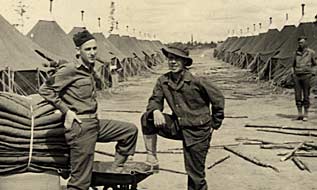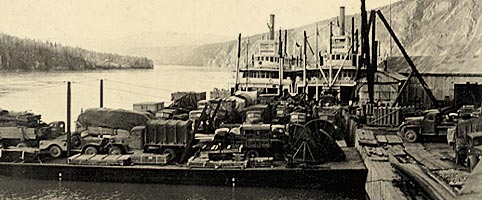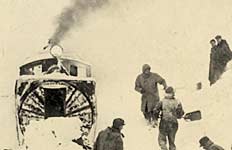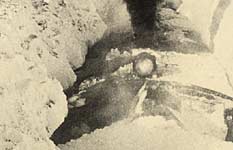
Mobilizing Men & Materials
Mobilization of a massive workforce in a few short months was assigned to General Hoge. In order to push through a tote road in one season, he divided the route into sections and started work in different directions simultaneously. Crews started in Fort St. John, Fort Nelson, Whitehorse, Carcross, and Big Delta.
The U.S. Army 18th Engineers Camp in Whitehorse (view more details)

There were seven regiments with almost 11,000 enlisted men working on the Alaska Highway:
341st and 95th General Service – Dawson Creek northward
35th Engineers – Fort Nelson northward
340th Engineers – Whitehorse southward
93rd General Service – Carcross to Teslin southward
18th Engineers – Whitehorse northward
97th Engineers – Big Delta, Alaska southward
During the highway construction in 1942-1943 all available means of transportation were used to supply the road builders.(view more details)

One ongoing challenge faced by the regiments was obtaining the materials required to do the work. Equipment and supplies were shipped through three points: to Dawson Creek through Edmonton by train; by ship to Skagway and then by train to Whitehorse; and by ship to Valdez and then bulldozed and trucked to Slana and Tanana Crossing. Bottlenecks occurred in these places as well as more southern stations including Seattle and Vancouver. Bottlenecks also occurred along the highway due to washed out road and bridges. In addition, the members of the Railway Battalion tried to keep the supplies running through deep snows on the White Pass and Yukon Route railway from Skagway to Whitehorse. Sometimes regiments had to wait for days or weeks until their equipment and supplies caught up with them.
freed by an engine with a rotary plough...(view more details)

Only the roof of the... railway snowplow is visible...(view more details)


